The Lost Squadron (1932)
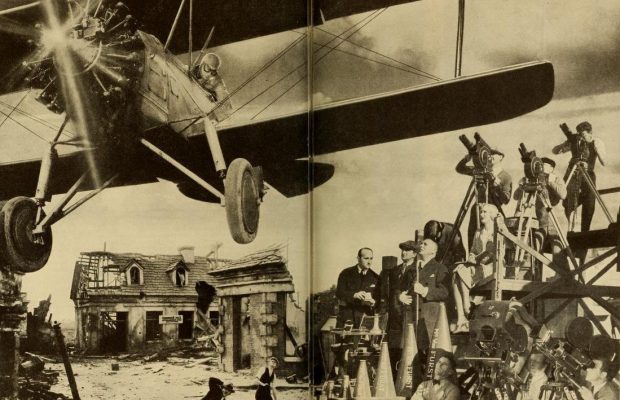
Toronto Film Society presented The Lost Squadron (1932) on Sunday, March 24, 2019 in a double bill with The Captain Hates the Sea as part of the Season 71 Sunday Afternoon Special Screening #9.
Production Company: RKO Radio Pictures. Director: George Archainbaud. Producers: David O. Selznick, Louis Sarecky. Screenplay: Wallace Smith, additional dialogue by Herman J. Mankiewicz, Robert S. Presnell, Humphrey Pearson from the story by Dick Grace. Music: Max Steiner. Cinematography: Edward Cronjager, Leo Tover. Camera Operators: Joseph F. Biroc, William H. Clothier, George E. Diskant, Harold E. Wellman, Harry J. Wild. Still Photographer: Fred Hendrickson. Aerial Photographers: Elmer Dyer, Fred Fleck, Robert Robinson. Film Editing: William Hamilton. Sound: Clem Portman, Hugh McDowell Jr. Costumes & Scenery: Max Rée. Stunt Pilot: Dick Grace. Release Date: March 10, 1932.
Cast: Richard Dix (Captain Gibson), Mary Astor (Follette Marsh), Robert Armstrong (Lieutenant Woody Kerwood), Dorothy Jordan (The Pest, Woody’s Sister), Joel McCrea (Red), Erich von Stroheim (Arthur Von Furst), Hugh Herbert (Fritz), Ralph Ince (Jettick), Marjorie Peterson (Stenographer), Ralph Lewis (Joe), William Davidson (Lelewer).
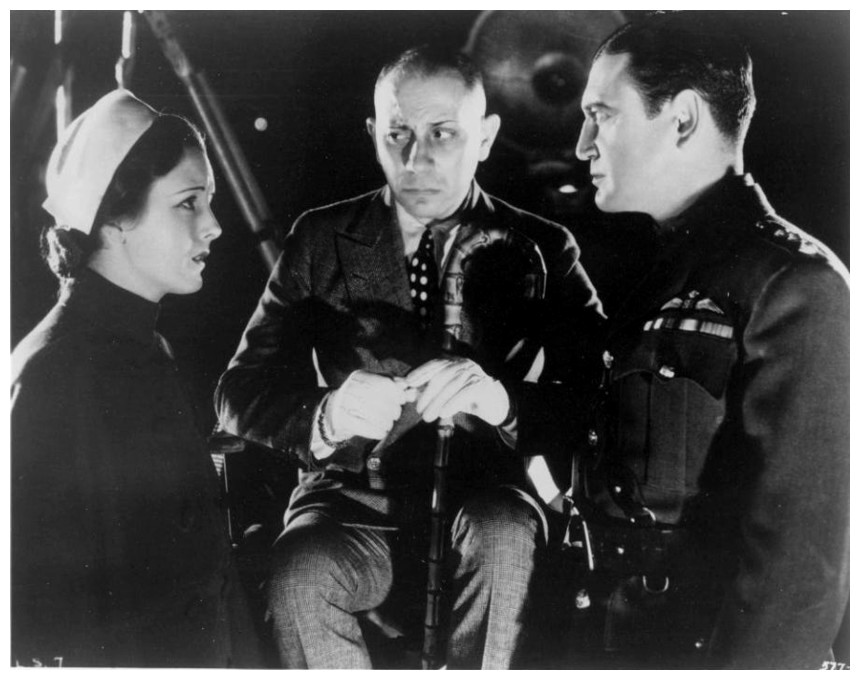
I first watched The Lost Squadron when I was reading Richard Koszarski’s excellent book on the period of time when Erich von Stroheim directed films. The book The Man You Loved to Hate covers von Stroheim’s silent films and owning most them, I viewed each one after I finished reading that particular section. I also took the interest further and watched some of the films I had that he was hired to act in, which included today’s first film. And although I liked the story in general, von Stroheim in specific is what makes the film stand out.
The role he played was specifically written with him in mind by the film’s playwright Wallace Smith, a character that he truly had made his audience believe he was in real life; a detail-oriented, dictatorial, nasty, jealous director who would stop at nothing to get what he wanted on film. One specific obsession which von Stroheim liked to use to great effect in the films he was directing was a theme that included emergency services, specifically fire trucks and ambulances. If possible, he would also try and have them included in films he was only hired to act in, such as today’s.
The film is interesting for a couple of other reasons. First, that it shows the ignoring of war veterans by their country once conflict comes to an end. The second interesting aspect is two of the men’s love interest whose name in the film is The Pest. Does she give mixed messages or are we seeing the recipient of her charms misconstruing her intentions?
As for the rest of the cast, it’s a good and diverse one. Richard Dix plays the leading character and one of the three ex-fighter WWI pilots. Dix was a pretty big silent-era star and though he became less of a draw with sound, he acted in film until 1947, just two years shy of his death in 1949 at the rather young age of 56. He married his first wife, Winifred Coe, just prior to the making of this film and although that marriage only lasted just over a year, his second marriage lasted until his death. His death was likely exacerbated by the fact that he was a heavy drinker, something that unites him with John Gilbert who stars in our second feature.
The anti-heroine is played by Mary Astor who started in films when she was just 15. She also has my favourite birth name of any movie star—Lucile Langhanke.
Robert Armstrong, who plays the mustachioed second ex-pilot, started out in silent film and is most famous for playing the director in the original version of King Kong. Coincidentally, Dorothy Jordan, who plays his sister and is The Pest, in 1933 married famous film producer Merion C. Cooper who was one of the two directors of this famous ape’s movie.
Handsome Joel McCrea plays the third ex-pilot which is nice on the eyes. Author of tonight’s story, Dick Grace, who was also an aviator and served in both world wars, played a flier in the film as well.
What I thought was rather unusual was the decision to cast Hugh Herbert as the mechanic, Fritz. He’s the fourth war friend of the group of fliers, and he plays the role straight. If you know the actor, he usually plays a souse and it’s usually done for comic relief, pretty much in every film of his I’ve ever seen. He has a trademark laugh, “Hoo-hoo”, and if I remember correctly, we do hear it once, but only once, in this film.
Introduction by Caren Feldman
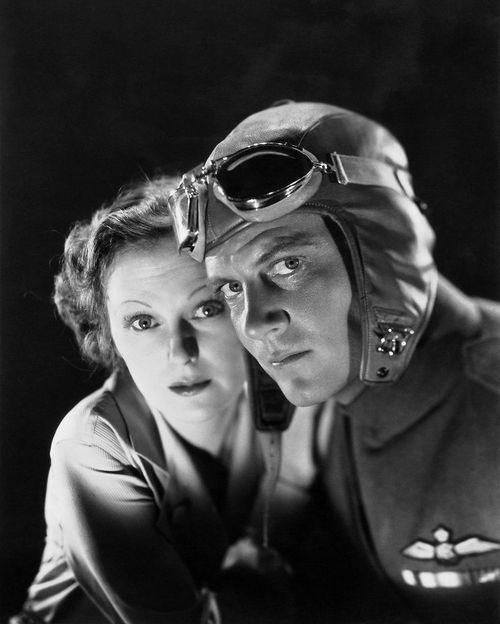
In the early ’30s, RKO had Richard Dix and Columbia had Jack Holt—so these stalwarts could always be depended upon for a couple of good old-time air pictures each year. But in the wake of Hell’s Angels, The Dawn Patrol, and others, there were signs that the public was becoming a little bored with the cycle, no matter how expertly the films were made. (And they were expertly turned out; take a look at Wellman’s recent Lafayette Escadrille, compare it with a Dix programmer like Ace of Aces, and note the difference!) In order to stress that it wasn’t like all the others, The Lost Squadron advertised itself as “NOT an Air Film…NOT a War Film”! Actually, it was both of these to a degree, although the war footage is limited to one of those gallant, gentlemanly aerial duels, in the opening sequence of the picture. It’s a Depression era movie and shows it—but most of all it’s a wonderfully enjoyable piece of hoke about Hollywood. Stroheim, in a not too exaggerated caricature of himself, gives a wonderful performance—though one can’t really imagine the real Stroheim shooting a whole aerial battle from the ground. Detail may be wholly unconvincing—but the overall picture is far more convincing than in most movies about Hollywood. The aerial stunts and crashes of course are all highlights, and are the work of Dick Grace. For all his unquestioned skill and daring, Grace, in his book “Squadron of Death”, gives the impression of being both an egotist and a blowhard. Certainly one can’t take him too seriously when he describes, in great detail, how he staged the crash into the sea in this picture—when said crash turns out to be a particularly neat piece of technical trickery!!
The cast is full of reliable old friends from the ’20s and ’30s—and if the dialogue gets a shade too sentimental, once in a while (every third line seems to refer to somebody or other, usually Dix, being “a swell guy!”), …well, that was very much a part of the ’30s, too. Director George Archainbaud was a curious fellow, who’d made some extremely interesting silents for Selznick and Chadwick back in the ’20s, and wound up making particularly slick and vigorous westerns in the ’40s. He always seemed worthy of better things—yet, even on the program level, never turned out a really fine film. This is certainly one of his better efforts, though it has some weak spots. The film bogs down badly in its closing reels—the whole section of the police interrogation is far too slowly paced and badly acted—and certainly some of the blame for this must be shouldered by Archainbaud. However, it picks up again for the finale, a mixture of melodrama and good old-fashioned sentiment, plus a sticky end for von Stroheim that isn’t too far removed from his demise in Foolish Wives. The print is brand new, in excellent condition, and complete. (For some reason, most 1932 sources list the film as only 72 minutes—but it runs more than a reel in excess of that.) However, this and all other prints of the film that I’ve seen have one very strange defect. On every single change of camera set-up—sometimes two or three in a minute—you’ll notice a slight pop on the sound track—not enough to be annoying, but enough so that one is aware of it. It would seem that when the original negative was spliced together, someone clean forgot to bloop out all the splices! Presumably, when it was discovered, the culprit must have been run out of Hollywood on a rail—it’s an incredible thing to have happen to any film, but more incredible still is that nobody seems to have noticed it until it was too late!
The Theodore Huff Memorial Film Society by William K. Everson, November 22, 1960
…A viewing of the film destroyed certain pre-conceived notions and affirmed others. The actual sequences of the shooting of the “film within the film” were conventional in presentation, though the stunt flying itself was extremely exciting. Von Stroheim’s image as “the man you love to hate” was fully explored in a rather hammy performance—his hysterical screaming of: “Keep the cameras rolling! We might catch a nice crack-up,” as a plane plummeted earthwards when the stunt pilot temporarily lost control; backed by a very mannered, deliberate set of movements like his military gestures, raising and lowering his cane in excitement as if he was presenting arms. Others worked, such as the scene in which he berates a group of extras playing soldiers for lacking the correct military posture—an “in” joke, as he had been known to drill his extras the previous decade when he was directing a military picture—and the casual arrogance of the sweeping movement with which he flung aside a microphone when he had finished speaking. The presentation of a Hollywood premiere at which the four fliers are re-united, with the flashing sky-writing, the milling crowds, the eager radio interviewer talking to a vapid starlet who prattles the conventional inanities into his mike; this catches the right atmosphere…. …The direction is uneven throughout, establishing a mood but then allowing it to lag through over-statement or slow development; with the exception of an outstanding sequence in the last reels, shot in an extremely low key, with all sound bar a whining wind cut out. The drama being played out against the setting is extremely tense, establishing a perfect contrast. The performances are competent, with Dix and Astor making the least impression and Dorothy Jordan the most.
Films and Filming by Kingsley Canham, September, 1969
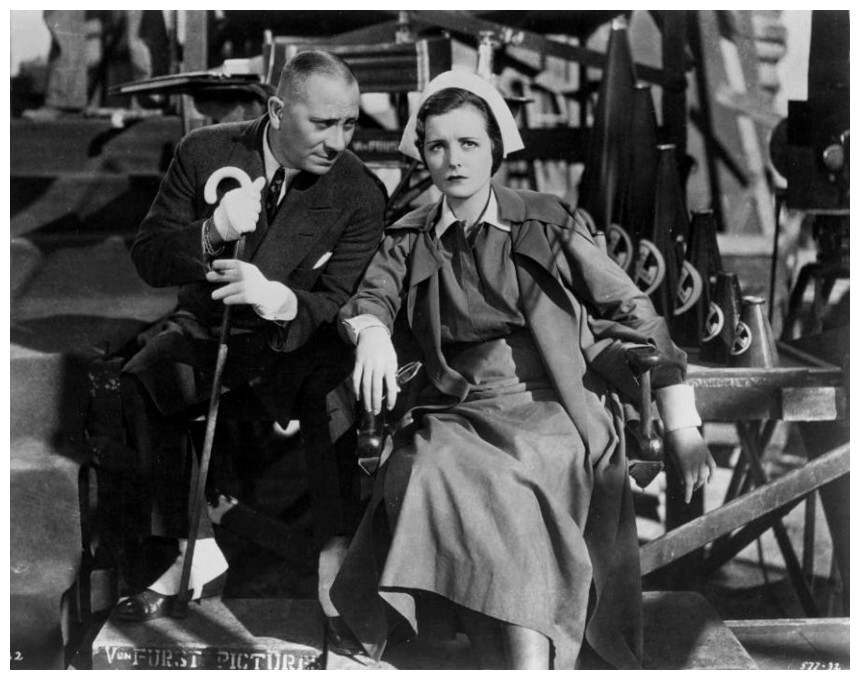
George Archainbaud, adoptive son of actor-director Emile Chautard, was born in Paris on May 7, 1890. He started his professional career as an actor in his native city. In 1915, he emigrated to the U.S. as assistant director to Chautard at the Fort Lee Studio, New Jersey. His first film as a director was The Iron Ring (1917); his last was The Last of the Pony Riders (1953). Some familiar titles in his filmography: Men of Chance (1932); Thirteen Women (1932); The Penguin Pool Murder (1932); Murder on the Blackboard (1932); After Midnight (1933); Her Jungle Love (1938); Thanks for the Memory (1938); The Kansan (1943); and The Woman of the Town (1943). He died of a heart attack February 20, 1959 in Beverly Hills. During the last years of his life he had devoted himself entirely to television, his last series being “Lassie”.
Toronto Film Society by Peter Poles, January 3, 1977
…Before much work could be accomplished on the Walking Down Broadway film, von Stroheim was offered the part of “De Forest” (later changed to “Von Furst”) in Paul Sloane’s The Lost Squadron at RKO. The role was an obvious self-caricature. Von Stroheim would play an arrogant and explosive film director whose mania for realism leads him to murderous excess. But he was eager for the chance to play it, and on October 7, 1931, his Fox contract was suspended to allow him six weeks on the RKO picture starting October 15. Then the illness of Paul Sloane caused a delay in The Lost Squadron, and on November 25 Fox granted up to six additional weeks’ leave. George Archainbaud replaced Sloane, completed the film quickly, and on December 31 von Stroheim was back on salary at the Fox studio.
The Man You Loved To Hate: Erich von Stroheim and Hollywood by Richard Koszarski (1983)
Notes compiled by Caren Feldman

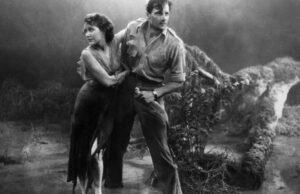
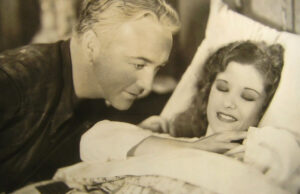
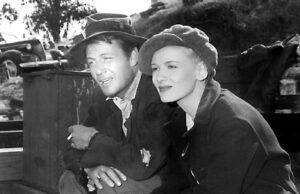






Leave a Reply